Have you ever wondered why alligators, the apex predators of freshwater habitats, do not prey on capybaras, the largest rodents in the world? This intriguing question has baffled scientists and nature enthusiasts alike. On the surface, it may seem like a clear case of predator versus prey, but as we delve deeper into the complex dynamics of these two species, we discover a relationship that defies conventional expectations.
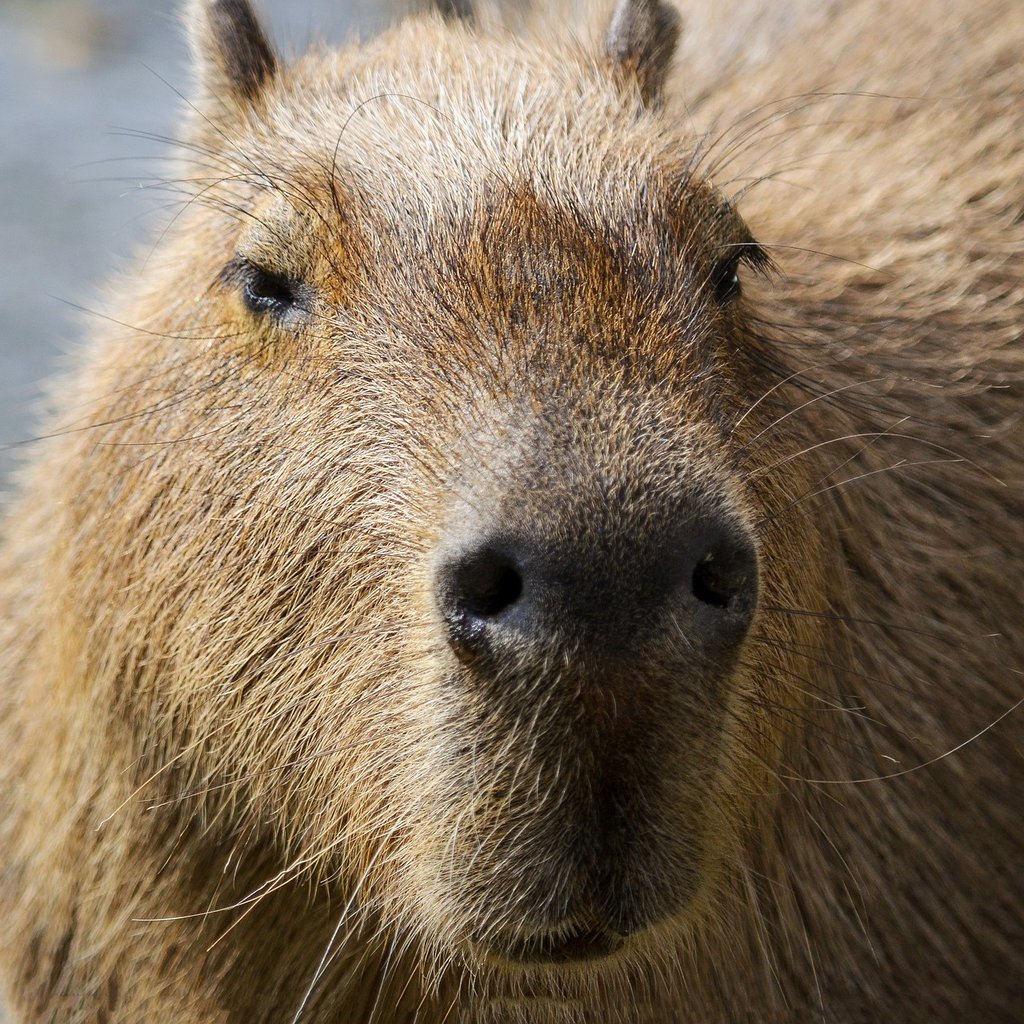
The Unlikely Companions: Understanding Capybaras and Alligators
Alligators and capybaras may seem like an odd pairing in the animal kingdom. After all, one is a massive reptile lurking in the water, while the other is a giant rodent grazing on land. However, these two species have managed to coexist surprisingly well in their shared habitats, demonstrating an intricate relationship that goes beyond the superficial predator versus prey dynamic. Let's delve deeper into the world of capybaras and alligators to understand the factors that contribute to their unlikely companionship.
At first glance, one might assume that alligators would naturally prey upon capybaras due to their size and vulnerability. However, nature often defies our expectations, and in this case, capybaras have developed fascinating adaptations that allow them to avoid becoming alligator snacks. One crucial factor is capybaras' social behavior, which serves as a powerful defense mechanism.
- 1. Safety in Numbers: Capybaras typically live in large family groups, known as "capybara communities" or "herds." These groups consist of multiple individuals, ranging from a few to as many as 100 capybaras. When an alligator approaches, the capybaras form a united front, making it challenging for the predator to single out an individual target.
- 2. The Alligator's Preference: Another reason why alligators do not frequently prey upon capybaras is that they often prefer easier prey options. Alligators are opportunistic hunters and will typically choose smaller, more accessible prey that requires less effort to capture and consume. This preference extends to various aquatic species, such as fish, turtles, and smaller mammals, which align with their hunting strategy and energy conservation.
- 3. Size Matters: Capybaras have evolved to be quite large, with some individuals reaching over 100 pounds in weight. This significant size acts as a deterrent for alligators, as attacking a capybara could result in potential injuries or a failed attempt at capturing the prey. Alligators, being efficient hunters, are more likely to target smaller prey that poses fewer risks and demands less energy expenditure.
It is essential to recognize that the relationship between capybaras and alligators extends beyond predator-prey dynamics. Capybaras, with their herbivorous diet and semi-aquatic lifestyle, contribute significantly to their ecosystems as "ecosystem engineers." They play a crucial role in shaping and maintaining the habitats they inhabit, particularly by creating water channels and wallows through their grazing and digging activities.
Alligators, being apex predators, benefit from the presence of capybaras in their environment. The water channels and wallows created by capybaras not only provide alligators with easier access to water but also create optimal conditions for breeding and nesting. By utilizing the habitat modifications made by capybaras, alligator populations can thrive more effectively.
The relationship between capybaras and alligators is not just a product of the modern era. These species have coexisted for millions of years, coevolving and shaping each other's behavior and adaptations. It is a testament to the interconnectedness of life on our planet and the intricate web of dependencies that exist within ecosystems.
In conclusion, the unlikely companionship between alligators and capybaras is a remarkable phenomenon that highlights the complexity of predator-prey interactions. Capybaras' social defense mechanisms, formidable size, and unique ecological contributions have deterred alligators from considering them as preferred prey. Simultaneously, alligators have adapted to target smaller and more easily accessible prey, conserving energy and avoiding potential injuries that capybaras' formidable defenses may pose. This intricate relationship sheds light on the diverse strategies employed by species to coexist and thrive in our world's ecosystems.
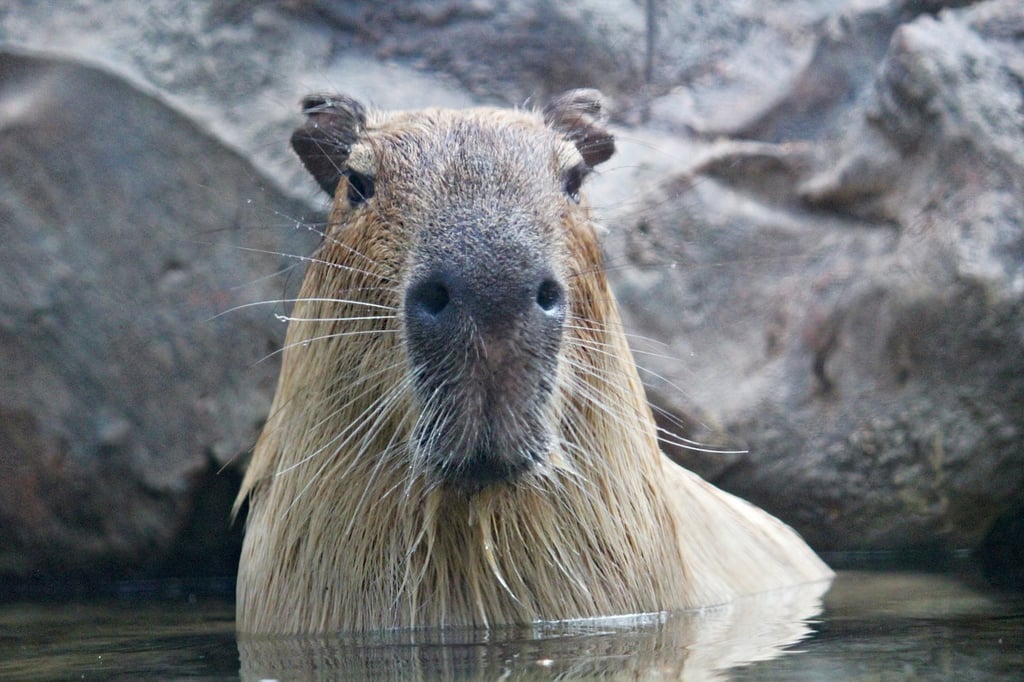
Safety in Numbers: Capybaras' Social Defense Mechanism
One of the key reasons why alligators do not typically eat capybaras is due to the capybaras' social defense mechanism. These unique creatures have evolved to live in large social groups, known as herds, which provides them with a significant advantage against potential predators like alligators.
Capybaras are highly social animals, often found in herds ranging from a few individuals to more than a hundred. This social structure serves as a powerful deterrent to alligators, as targeting a capybara within a large herd presents a significant challenge for these reptilian predators.
When an alligator approaches a capybara herd, the capybaras swiftly form a tight circle, with the adults on the outer edges and the young in the center. This defensive formation helps protect the vulnerable members of their group from alligator attacks. By banding together, capybaras are able to present an intimidating and formidable force to potential predators.
Not only do the capybaras rely on their numbers to deter alligators, but they also engage in collective vigilance. While some members of the herd feed or rest, others remain on high alert, scanning the surroundings for any signs of danger. This constant vigilance reduces the likelihood of surprise attacks by alligators, as the capybaras can quickly alert the herd to the presence of a potential threat.
Additionally, capybaras exhibit alarm behavior, which further strengthens their social defense mechanism. When a member of the herd detects an approaching alligator, they emit a series of vocalizations to warn the others. This vocal alarm system allows the capybaras to coordinate their defensive response and ensures that the entire herd is aware of the impending danger.
- Large social groups act as a deterrent to alligators
- Capybaras form a tight defensive circle when threatened
- Collective vigilance reduces the risk of surprise attacks
- Alarm behavior alerts the entire herd to potential threats
Overall, capybaras' social defense mechanism plays a crucial role in preventing alligator attacks. By living in herds, forming defensive circles, maintaining collective vigilance, and employing an alarm system, capybaras demonstrate their ability to not only survive but thrive in the presence of these formidable predators. This remarkable adaptation showcases the incredible strategies animals employ to navigate their environment and avoid becoming a meal for opportunistic predators.
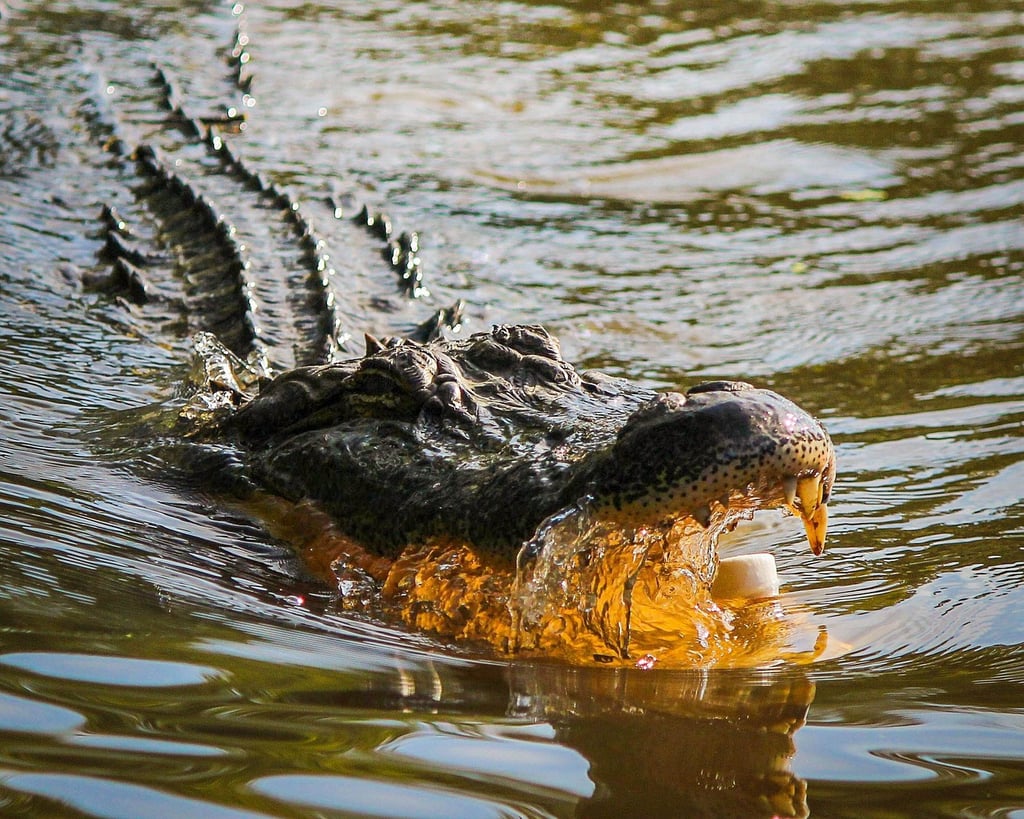
The Alligator's Preference: Easier Prey and Energy Conservation
One of the key reasons why alligators do not typically target capybaras as part of their diet is their preference for easier prey. Alligators are opportunistic predators, constantly assessing the energy cost versus benefit when selecting their prey. Capybaras, with their large size and strong social defense mechanisms, pose a greater challenge for alligators compared to smaller prey options such as fish or birds.
Alligators are known for conserving their energy whenever possible. They have a slow metabolism and can go for prolonged periods without food. By targeting smaller and more easily accessible prey, such as fish or birds, alligators can maximize their energy intake while minimizing the risk and effort associated with capturing larger prey like capybaras.
Furthermore, capybaras are agile and swift runners, able to reach speeds of up to 20 miles per hour. Their ability to quickly escape into the water or find refuge in dense vegetation makes them a formidable challenge for alligators. In contrast, smaller prey species are easier for alligators to capture and manage, requiring less energy expenditure.
Alligators also consider the potential risk versus reward when assessing their prey options. Capybaras possess formidable defenses, including sharp teeth and powerful jaws capable of inflicting serious injuries. In a confrontation between a capybara and an alligator, there is a significant risk of injury to the alligator. Therefore, alligators tend to avoid engaging with capybaras unless there is a compelling reason, such as a scarcity of alternative prey.
Additionally, capybaras often inhabit areas with dense vegetation near bodies of water. This offers them added protection and the ability to seek refuge quickly if they feel threatened. Alligators, being highly adapted to aquatic environments, prefer hunting in the water where they have the advantage. The presence of dense vegetation and the ability of capybaras to quickly escape into it further diminishes the chances of a successful alligator predation attempt.
In conclusion, the alligator's preference for easier prey options, energy conservation, and consideration of risk factors play a significant role in their decision not to target capybaras. By selecting smaller and more accessible prey, alligators can conserve energy while minimizing the risk of injury. Capybaras, with their formidable defenses and ability to quickly escape into water or dense vegetation, present a greater challenge for alligators. This delicate balance of predator-prey dynamics showcases the intricate strategies and adaptations employed by both species within their shared ecosystem.

Size Matters: Capybara's Formidable Defenses
In the fascinating world of predator-prey dynamics, size often plays a crucial role in determining who has the upper hand. When it comes to the unique relationship between alligators and capybaras, the capybara's formidable defenses play a significant role in preventing alligator attacks. Let's dive deeper into the astonishing ways in which the capybara's size works to its advantage.
First and foremost, the capybara's sheer size is a deterrent for alligators. As the largest rodents in the world, these herbivorous mammals can weigh up to 150 pounds and reach lengths of over four feet. This impressive physical stature alone can intimidate and dissuade alligators from considering them as potential prey. Alligators primarily target smaller animals that are easier to overpower, making capybaras less appealing from a hunting perspective.
But the capybara's size advantage doesn't end there. In addition to their bulk, capybaras possess a unique anatomical feature that further enhances their defenses – their webbed feet. These specialized appendages allow capybaras to navigate effortlessly through water and escape potential predators with remarkable speed. This ability to outswim alligators provides capybaras with a crucial advantage, significantly reducing the likelihood of falling victim to an attack.
Furthermore, capybaras' strong and robust teeth act as yet another line of defense. Their large, sharp incisors, perfectly adapted for chewing through tough vegetation, can also inflict painful bites on their adversaries if necessary. Alligators, being aware of the risk involved in engaging with such formidable opponents, tend to be more cautious when considering capybaras as potential prey.
Interestingly, capybaras also display a unique social behavior that enhances their defense against alligator attacks. These highly social animals live in groups called "herds" or "bands," consisting of a dominant male, several females, and their offspring. The collective vigilance and watchfulness of the group make it more challenging for alligators to successfully ambush a capybara, as multiple individuals are constantly alert and ready to alert the herd of any potential threat.
Another factor that contributes to the capybara's size-based defense is its speed and agility on land. Despite their large size, capybaras are surprisingly nimble creatures. With their muscular limbs and well-developed senses, they can quickly detect and evade alligator attacks by fleeing into dense vegetation or reaching bodies of water where alligators are less maneuverable. This combination of size, speed, and agility makes capybaras a formidable opponent for alligators, reducing the likelihood of successful predation.
In summary, the capybara's formidable defenses, including its sheer size, webbed feet, robust teeth, social behavior, and agility, serve as effective deterrents against alligator attacks. While alligators may be skilled predators, they recognize the risks and energy expenditure involved in attempting to prey upon capybaras. Instead, they typically opt for easier, smaller prey options that better suit their hunting abilities. The capybara's unique adaptations remind us of the fascinating ways in which nature equips its inhabitants to thrive and survive in a diverse ecosystem.
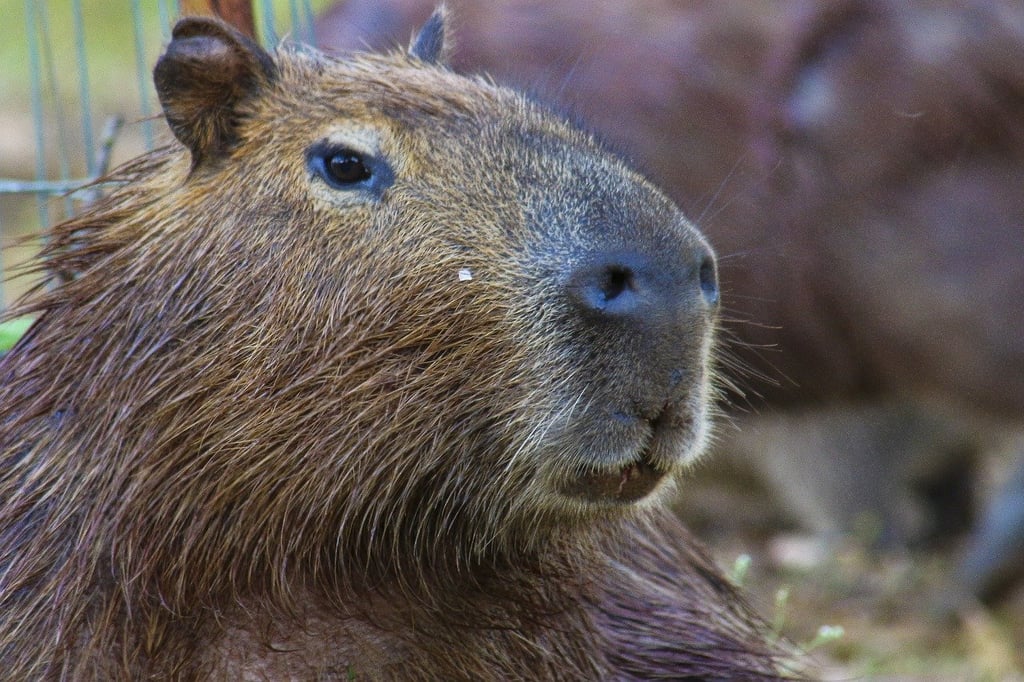
A Partnership in the Ecosystem: Capybaras as "Ecosystem Engineers"
In the fascinating ecosystem of freshwater habitats, capybaras play a vital role as "ecosystem engineers," shaping and maintaining their surroundings in ways that benefit a wide range of other species, including alligators. This unique partnership between the capybaras and alligators highlights the intricate interplay of ecological relationships.
One of the key contributions of capybaras as ecosystem engineers is their ability to create and maintain waterholes through their wallowing behavior. These large rodents spend a significant amount of time soaking in water, not only to regulate their body temperature but also to form wallows that become hotspots of biodiversity.
- By rolling in the mud and digging in the streambeds, capybaras create depressions that retain water even during dry spells. These wallows act as essential watering holes for numerous species, particularly during periods of drought. They provide a stable water source for alligators, fish, turtles, birds, and other animals, fostering their survival even in harsh conditions.
- Capybara wallows also help maintain water quality in the ecosystem. As they bathe in the water, the capybaras' natural oils mix with the mud, forming a layer that reduces evaporation and prevents excessive algae growth. This, in turn, benefits the aquatic ecosystem and improves the overall health of the habitat.
Furthermore, capybaras are herbivorous creatures with a voracious appetite for vegetation. Their grazing behavior helps control the growth of water plants, preventing the ecosystem from being overwhelmed by excessive vegetation. This process, known as herbivory, plays a crucial role in maintaining the balance and diversity of plant species.
Through their feeding habits, capybaras indirectly create open spaces in the habitat, giving other animals access to food resources that would otherwise be overshadowed by dense vegetation. This creates opportunities for alligators and other species to thrive by capitalizing on the capybaras' ecological impact.
The interdependency between capybaras and alligators becomes apparent when considering the capybaras' role in dispersing seeds. As they graze on various plants, capybaras inadvertently pick up seeds on their fur and hooves. These seeds are then transported to different parts of the habitat as the capybaras move, helping to disperse plant species and support the overall biodiversity of the ecosystem.
In essence, capybaras act as architects of their environment, sculpting the landscape and facilitating the survival of a multitude of species, including alligators. By creating waterholes, maintaining water quality, regulating vegetation, and dispersing seeds, capybaras enhance the ecological balance and provide valuable resources for the entire ecosystem to thrive.

Evolutionary Interplay: The Long History of Capybaras and Alligators
The relationship between capybaras and alligators stretches back millions of years, shaped by the forces of evolution that have sculpted their respective species. Understanding this long history provides crucial insights into why alligators do not typically pursue capybaras as prey.
The ancestors of capybaras and alligators diverged around 20 million years ago, branching off into separate evolutionary paths. Capybaras, the largest rodents in the world, started to populate South America, while alligators roamed the waters of North and Central America. Despite their separate journeys, their paths would cross again, creating a unique interplay of coexistence and mutual adaptation.
As capybaras populated their habitats, they served as key herbivores, grazing on aquatic vegetation and shaping the landscape around them. Their grazing habits and herbivorous diet created a favorable environment for various species, including alligators, who capitalize on the abundant resources provided.
- This mutually beneficial relationship is an example of how species can influence and shape each other's environments over time.
- Alligators, being opportunistic hunters, have developed a preference for smaller prey that requires less effort and energy to capture.
- By choosing smaller prey, alligators can conserve energy and increase their hunting success rate.
Capybaras, on the other hand, have evolved formidable defenses to ward off potential predators, including alligators. Their large size, averaging around 100 pounds, serves as a deterrent to alligator attacks. Additionally, capybaras are excellent swimmers and possess the ability to flee into the water to escape danger. These adaptations have made capybaras less vulnerable to predation by alligators compared to smaller, more easily targeted prey.
Another interesting aspect of their evolutionary interplay lies in the behavioral adaptations of capybaras. These social animals live in groups called herds, which can consist of as many as 100 individuals. Their group behavior acts as a defense mechanism against predators, including alligators.
When a perceived threat arises, capybaras will emit a loud bark-like vocalization, alerting the herd to danger. The coordinated response of the entire herd creates confusion and makes it difficult for alligators to single out an individual capybara as prey. In this way, capybaras demonstrate their ability to adapt and survive in the presence of alligators, turning their collective strength into a potent defense strategy.
This evolutionary interplay between capybaras and alligators showcases the intricate web of interactions that shape ecosystems. It highlights the ways in which two seemingly disparate species can find balance, coexistence, and even mutual benefits.
In conclusion, the long history of capybaras and alligators is characterized by a delicate dance of adaptation and coexistence. The capybaras' formidable defenses, social behavior, and ecological contributions have made them less appealing to alligators as prey. Alligators, in turn, have developed a preference for smaller and easier prey, conserving energy and avoiding potential injuries from capybaras' size and defenses. This symbiotic relationship serves as a fascinating example of the complex dynamics between predator and prey and the remarkable ways in which species have evolved to thrive together in their shared habitats.
Despite their differences in size, behavior, and ecological roles, alligators and capybaras have managed to coexist successfully in their shared habitats. Capybaras' social defense mechanisms, formidable size, and unique ecological contributions have deterred alligators from considering them as preferred prey. Simultaneously, alligators have adapted to target smaller and more easily accessible prey, conserving energy and avoiding potential injuries that capybaras' formidable defenses may pose. This intricate relationship sheds light on the complex dynamics of predator-prey interactions and serves as a reminder of the remarkable adaptations that allow diverse species to thrive together in our diverse ecosystems.
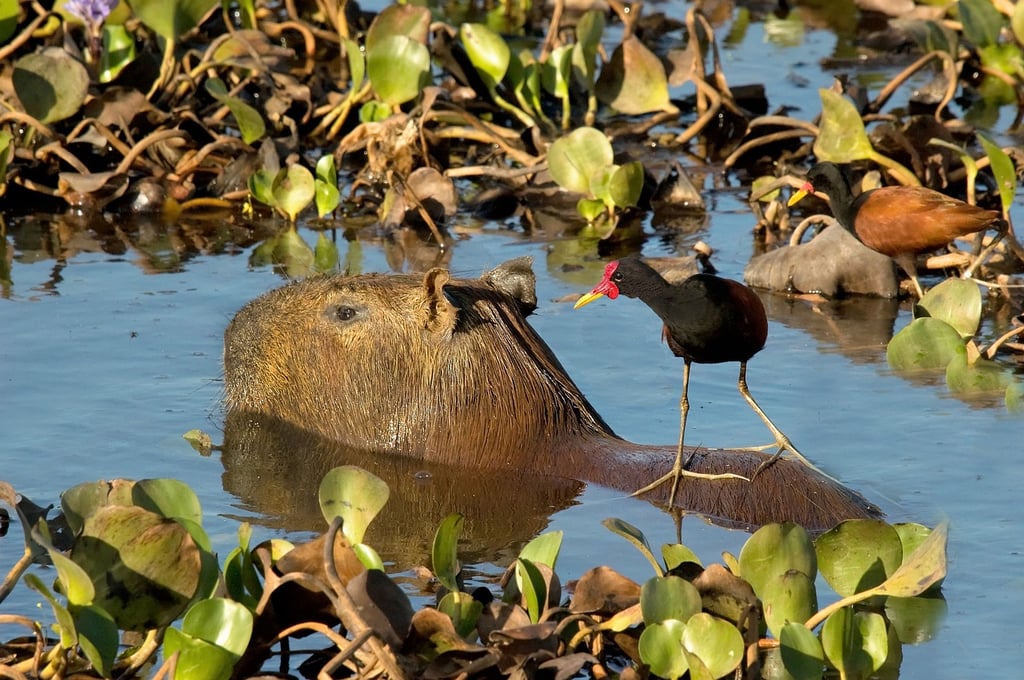
Faqs
-
Q: Are capybaras completely safe from alligator attacks?
A: While alligators generally do not target capybaras as their preferred prey, there have been rare instances where capybaras have fallen victim to alligator attacks. However, such cases are infrequent and occur under specific circumstances where the alligator feels particularly threatened or the capybara is vulnerable, such as during mating or birthing seasons. Overall, capybaras have evolved effective defense mechanisms to deter alligators and protect themselves.
-
Q: Do capybaras have any natural predators?
A: Capybaras, despite their large size, do have natural predators in addition to alligators. Some of their primary predators in their native habitats include jaguars, anacondas, and caimans. These predators, like alligators, assess the risks versus rewards while selecting their prey and may target capybaras when they perceive them to be more vulnerable or isolated from their social groups.
-
Q: How do capybaras benefit the ecosystem as "ecosystem engineers"?
A: Capybaras play a crucial role in their ecosystems by acting as "ecosystem engineers." Their grazing behavior helps maintain the balance of vegetation in their habitats, preventing the overgrowth of certain plant species. This benefits other animals that depend on the same habitat, as it creates diverse and suitable habitats for a variety of organisms. Additionally, the water bodies created by capybaras' wallowing behavior provide essential sources of water for other animals during dry periods.


